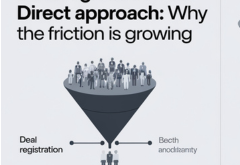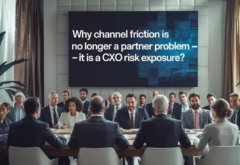In the face of rising ransomware threats, a new urgency is gripping India’s IT channel ecosystem: Is it time for IT partners—system integrators, managed service providers (MSPs), and solution resellers—to self-impose a 2-hour ransomware reporting timeline, even though CERT-In currently mandates reporting within 6 hours of detection?
CERT-In’s 6-hour rule, one of the fastest response mandates globally, was implemented to enhance India’s cyber resilience and ensure swift containment of security breaches. It applies to all service providers, intermediaries, data centers, and corporates. But as the stakes grow higher, especially with IT partners managing digital infrastructure for multiple clients, the industry is asking: can we—and should we—move faster?
A 2-hour reporting standard, though voluntary, could set a new benchmark for cybersecurity leadership in India. IT partners are increasingly becoming prime targets for ransomware gangs, not just as victims, but as conduits to infect larger enterprise networks. In such scenarios, the speed of acknowledgment and containment becomes as crucial as the incident response itself. Reporting within 2 hours could help mobilize defense mechanisms, notify affected clients sooner, and prevent lateral spread across digital supply chains.
More importantly, early disclosure reinforces trust. In an environment where transparency is becoming a key differentiator, partners who proactively alert authorities and clients signal operational maturity and risk accountability—traits that enterprise customers and regulators are beginning to prioritize.
However, the push for a 2-hour window isn’t without challenges. Real-time threat detection, immediate verification, internal escalation protocols, and regulatory readiness demand significant investments. For many small and mid-sized channel players, meeting this standard consistently would require upgrades in security infrastructure, logging systems, and trained cyber-response teams. There’s also the risk of false positives and panic-driven reporting, which could overwhelm coordination efforts.
Yet, with AI-powered threats emerging, and ransomware-as-a-service models making attacks more frequent and scalable, time is now a competitive and operational asset. Being able to detect, validate, and escalate ransomware attacks in under 2 hours could help IT partners not just comply with norms—but lead by example.
In conclusion, the idea of a 2-hour ransomware reporting window may seem ambitious, but it reflects the direction in which India’s IT security environment is heading. For IT partners, this is more than a compliance conversation—it’s about defining the next era of trust, agility, and cybersecurity readiness in a hyper-connected economy. Those who prepare now will likely set the standard for tomorrow.
 Latest Technology News Today – Get Latest Information Technology Updates and Services Latest Technology News Today – Get Latest Information Technology Updates and Services
Latest Technology News Today – Get Latest Information Technology Updates and Services Latest Technology News Today – Get Latest Information Technology Updates and Services 









